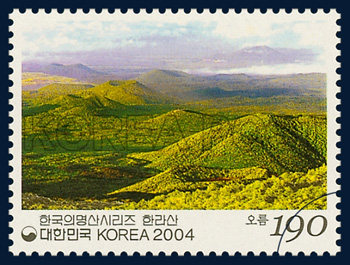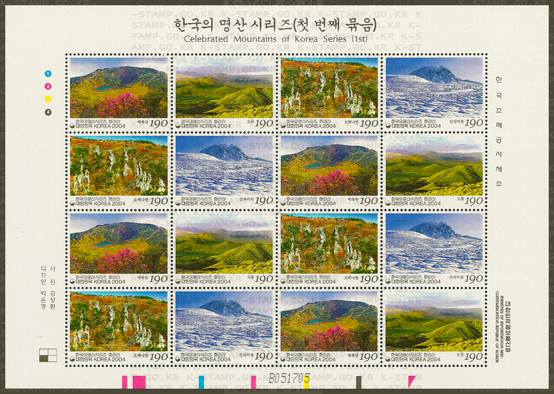View this article in another language
- 한국어
- English
- 日本語
- 中文
- العربية
- Español
- Français
- Deutsch
- Pусский
- Tiếng Việt
- Indonesian
The volcanic cones formed from lava deposits discharged following a volcanic eruption are called oreum in the Jeju Island dialect. It refers to the range of small cone-shaped mountains scattered at the foot of Hallasan Mountain. There are traces of craters atop these small hills and there are over 360 oreum across the island province.

Most such volcanic cones are relatively young and are highly permeable by rain, so the original cone shape of the oreum is well-preserved. There are often cone-shaped craters, but very small oreums don't have them. The volcanic cones consist of basalt scoria and stand around 50 meters high.
Most such volcanic cones are relatively young and are highly permeable by rain, so the original cone shape of the oreum is well-preserved. There are often cone-shaped craters, but very small oreums don't have them. The volcanic cones consist of basalt scoria and stand around 50 meters high.
There are efforts to preserve the volcanic cones in their original, natural state. The Geomun oreum in Seonheul-li Village was officially registered as a natural monument in 2005. Two years later, it was included on UNESCO's list of World Natural Heritage Sites as part of the larger Geomunoreum Lava Tube System.

By Limb Jae-un
Korea.net Staff Writer
Photos: Korea Post
jun2@korea.kr

Oreum have often become sites for farming and living. The people of Jeju Island cultivated fields at the foot of the volcanic cones to farm and to raise livestock.
Most such volcanic cones are relatively young and are highly permeable by rain, so the original cone shape of the oreum is well-preserved. There are often cone-shaped craters, but very small oreums don't have them. The volcanic cones consist of basalt scoria and stand around 50 meters high.
Most such volcanic cones are relatively young and are highly permeable by rain, so the original cone shape of the oreum is well-preserved. There are often cone-shaped craters, but very small oreums don't have them. The volcanic cones consist of basalt scoria and stand around 50 meters high.
There are efforts to preserve the volcanic cones in their original, natural state. The Geomun oreum in Seonheul-li Village was officially registered as a natural monument in 2005. Two years later, it was included on UNESCO's list of World Natural Heritage Sites as part of the larger Geomunoreum Lava Tube System.

The first set of 'Celebrated Mountains of Korea' stamps shows many scenic spots of Hallasan Mountain.
By Limb Jae-un
Korea.net Staff Writer
Photos: Korea Post
jun2@korea.kr